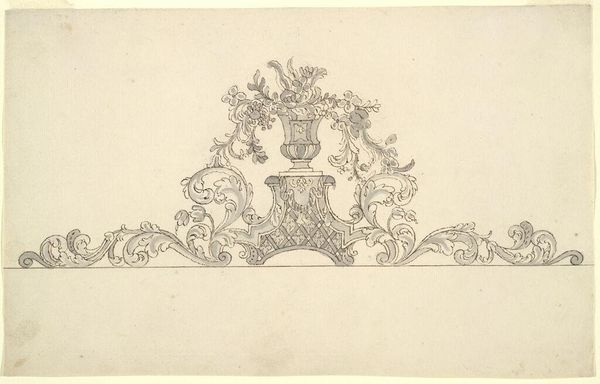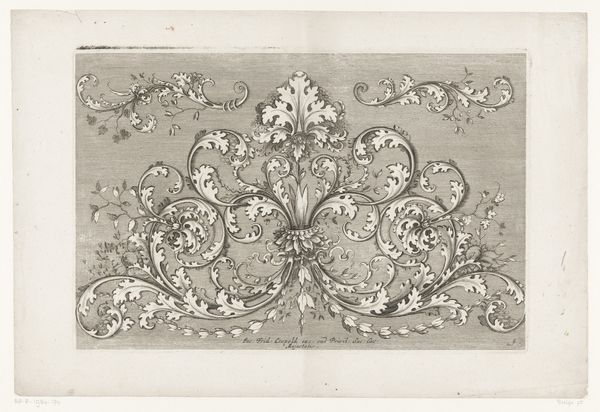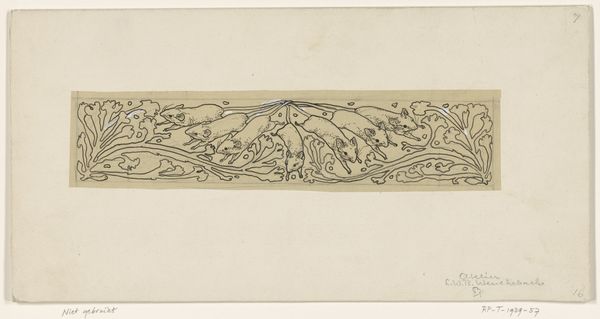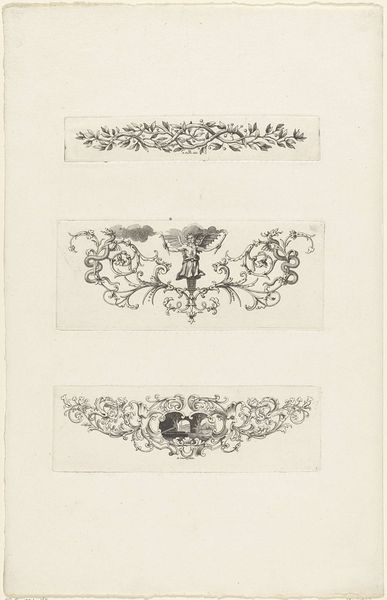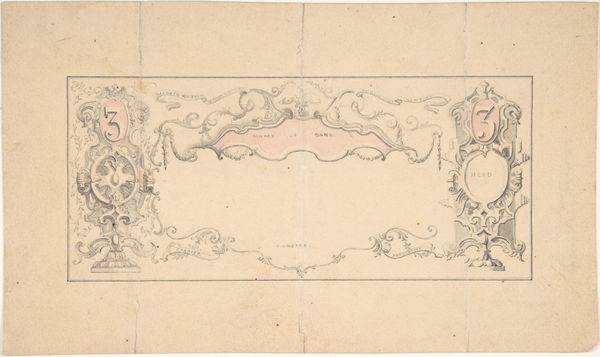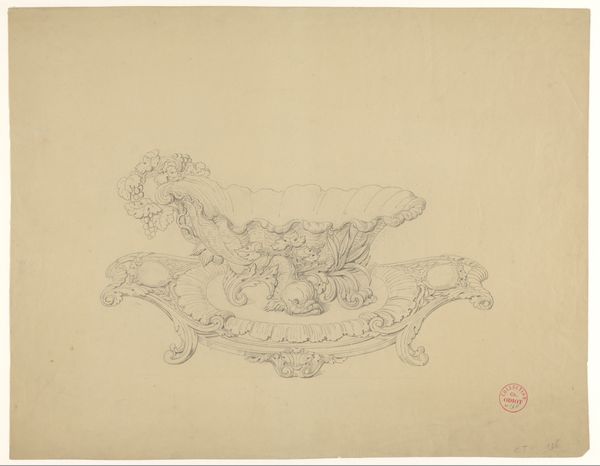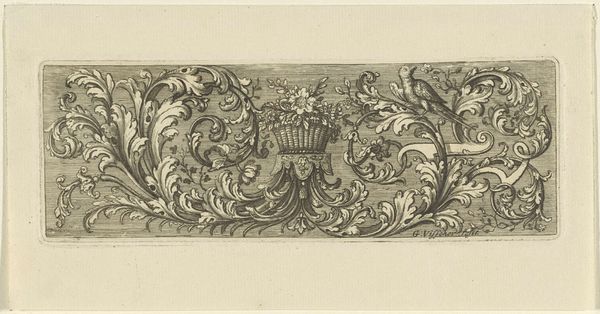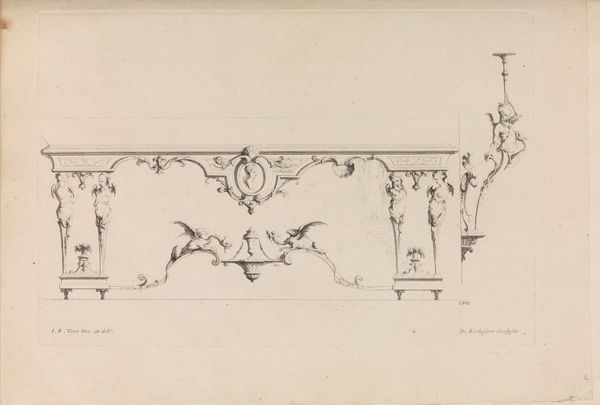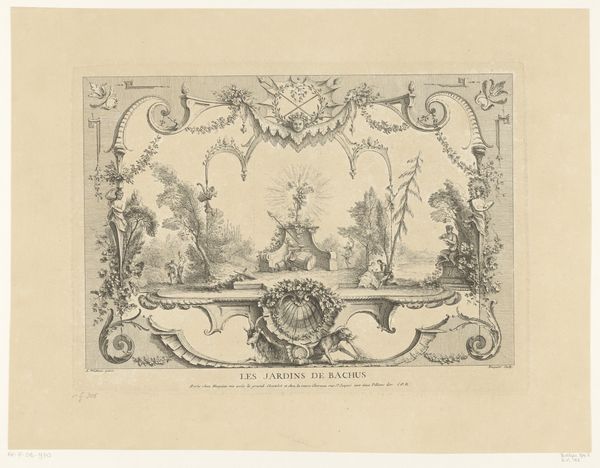
drawing, print, ink, pen
#
drawing
#
ink drawing
#
pen drawing
# print
#
pen sketch
#
ink
#
pen work
#
pen
#
decorative-art
Dimensions: sheet: 6 7/16 x 10 13/16 in. (16.4 x 27.5 cm)
Copyright: Public Domain
Curator: We’re looking at "Design for Panel Decoration" by J. Hulme, created between 1828 and 1840. The piece, housed here at the Met, features pen, ink, and graphite. It's really a stunning display of draftsmanship. Editor: My initial impression is how ornate and precise this panel design is. There is almost a melancholic mood radiating from it. Its monochromatic palette feels subdued, evoking a sense of nostalgia for a bygone era. What are your first thoughts about the panel design as a decorative work? Curator: What strikes me first is the exquisite balance and symmetry in its composition. Note how Hulme employs a central oval cartouche flanked by mirrored floral swags. The acanthus leaves are rendered with incredible detail; their curvilinear forms create a sense of movement and depth, playing with light and shadow. It embodies the period's interest in formalism and perfect representation of classical forms. Editor: While the piece exhibits compositional harmony and technical skill, I find myself more interested in exploring the historical context. Think about the social and economic conditions in the 1830s: Industrialization was rapidly transforming European society, and a rising middle class demanded affordable yet stylish goods. Hulme’s panel design likely catered to that market, providing a blueprint for mass-produced decorative elements. In this light, this piece serves as a window into the socio-economic tensions of its time. Curator: It’s interesting that you frame this work within a larger social picture. It leads me back to considering its structure. We see in Hulme’s drawing the careful, repetitive design reflecting and reinforcing dominant structures of power and patronage. What seems evident is an intention of social control being asserted through these highly stylized depictions. Editor: The intricate design is visually pleasing, and by using the method of repetitive techniques, this decorative work becomes more intriguing when viewed as a document embodying the socio-cultural shifts of 19th-century England. I’ll leave today thinking more about design intended to influence consumerism and commodification. Curator: I appreciate how you linked Hulme's design to broader social implications. For me, its meticulous execution offers a masterclass in draftsmanship and formalism. I will leave today pondering over Hulme's play with geometry, symmetry, and its perfect proportions, truly remarkable to behold!
Comments
No comments
Be the first to comment and join the conversation on the ultimate creative platform.
